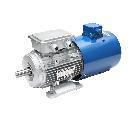What are the characteristics of brake calipers from this supplier? What are the precautions for use?
Publish Time:
2023-03-08
Brakes typically consist of components such as coils, armatures, and rotors. It is a device used to brake, stop, or hold an axle or rotating body, a type of brake operated by force. Brake suppliers introduce the features and usage precautions of brakes.

I. Applications of Brakes:
Brakes from brake suppliers belong to general transmission equipment and are widely used in printing, packaging, automated equipment, machine tools, and other fields. The above industrial machinery all require brakes for transmission equipment, and their use should be ensured. For example, the service life of the brake is one guarantee.
II. Working Principle of Brakes:
When the coil is energized, it generates magnetic force to attract the armature plate, and the clutch is engaged; when the coil power is cut off, the armature rebounds, and the clutch is disengaged. Its working principle is the same as that of dry and wet multi-disc brakes, except that it adds several friction pairs. The torque of the same volume is greater, and oil or other coolants must be used to cool wet multi-plates.
III. Features of Brakes:
1. High-speed response: Due to dryness, torque transmission is fast, and movement is convenient.
2. Durable: Good heat dissipation, using advanced materials. Even under high frequency and high energy use, it is very durable.
3. Easy to assemble and maintain: The magnetic field coil is a static shape embedded in ball bearings, and there is no need to remove the central core or use carbon brushes, making it simple to use.
4. Precise movement: Using plate-type leaf springs, it will not loosen even with large vibrations, and it is durable.
IV. How to Ensure the Service Life of Brakes? Consider the following aspects:
1. Electromechanical friction materials: New friction materials have a longer service life than traditional friction materials.
2. Load characteristics, dynamic load torque, and static load torque.
3. Action reflection time, that is, the energization, de-energization, and open-circuit time will shorten the service life of the brake.
4. The use of high-quality brush materials can extend the service life.
Brakes from brake suppliers can be installed on coaxial or abutting shafts, but the coaxiality of the two shafts must be ensured. After installation, do not allow the fork to rub against the valve plate, and the gap should not exceed a large gap. The gap between the rotor and the armature must be ensured to reach the specified size.
V. Performance of Brakes
1. Good thermal stability. This is because the brake disc does not have a friction pressure-increasing effect on the friction plate, and because the size of the brake friction plate is not long, its working surface area is only 12%~6% of the brake disc area, so the heat dissipation is good.
2. Good water stability. Because the unit pressure of the brake pad on the brake disc is very high, it is easy to squeeze out water. At the same time, under the action of centrifugal force, it is easy to fall off after being contaminated by water. In addition, the wiping effect of the pad on the disc. Therefore, after letting go of the water, only after one and two braking can it return to normal; drum brakes can only restore normal braking efficiency after more than ten braking.
3. Good braking stability. The braking torque of the disc brake is linearly related to the piston thrust and the friction coefficient of the brake cylinder. In addition, there is no self-increasing effect. Therefore, the braking torque increases slowly during braking. Compared with drum brakes, it can ensure higher braking stability.
4. The braking torque is irrelevant to the forward and backward travel of the vehicle.
5. Under the condition of the same braking torque output, the mass and size of the disc brake are smaller than that of the drum brake.
6. Brake supplier: Disc friction linings are easier to replace than drum friction linings after wear, with a simple structure and easy maintenance.
Related News

